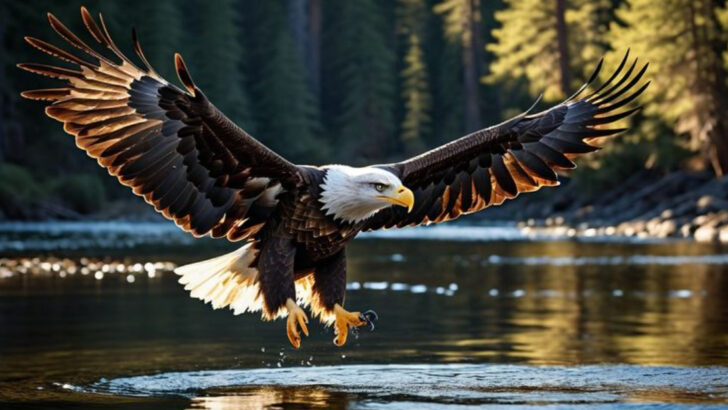Birdwatching is one of those simple pleasures that can turn any day outside into a memorable experience. America is home to an incredible variety of birds, each bringing its own splash of color and personality to the skies. Some species stand out not just for their beauty but for the thrill of spotting them in their natural habitats.
If you enjoy watching birds, there are certain species that you really don’t want to miss. From striking plumage to unique behaviors, these birds have earned a special place among enthusiasts. Getting to know them can deepen your appreciation for the diversity right outside your door, and might even inspire your next birdwatching trip.
Bald Eagle
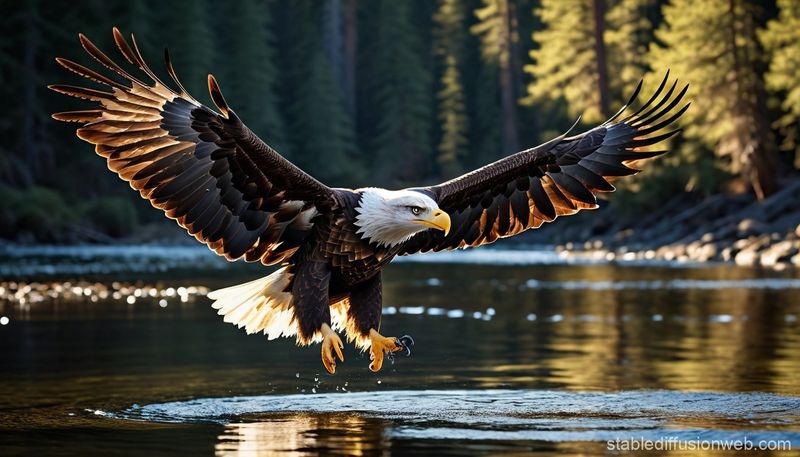
The Bald Eagle, a symbol of strength and freedom, gracefully soars across American skies. With a wingspan reaching up to 8 feet, this majestic bird captures the attention of all who see it. Its striking white head and tail contrast with its dark brown body, creating an unforgettable image.
Spotting one near a lake or river is a thrilling experience. They are known for their impressive fishing skills, often seen diving to catch fish from the water’s surface. Observing a Bald Eagle in its natural habitat is truly a breathtaking moment that stays with you.
Painted Bunting
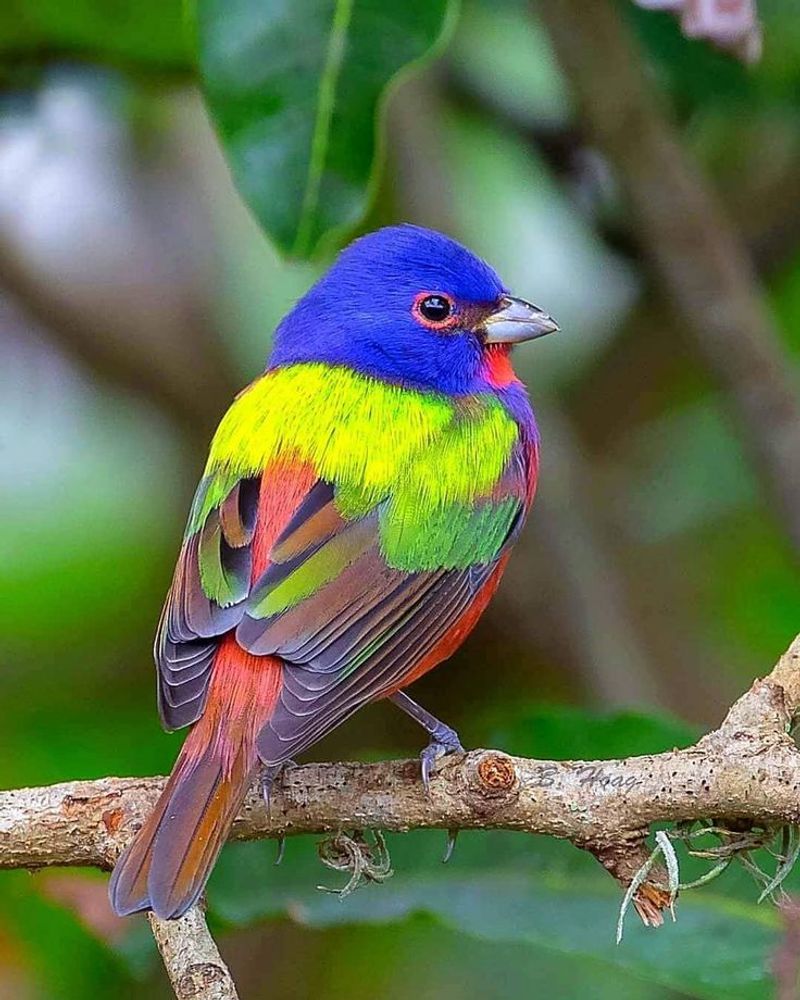
Often described as a living rainbow, the male Painted Bunting is a breathtaking spectacle with its kaleidoscope of colors. Spotting one feels like finding a gem in the wild. These birds thrive in thickets and woodland edges, where their vivid hues contrast the greenery.
Despite their flashy appearance, Painted Buntings can be elusive, often heard before seen. Their sweet, high-pitched songs echo through their habitat, adding to their mystique. Interestingly, these birds molt twice a year, switching from vibrant breeding colors to more muted tones.
Renowned for their beauty, they are often a highlight for birdwatchers across the southeastern U.S.
American Robin
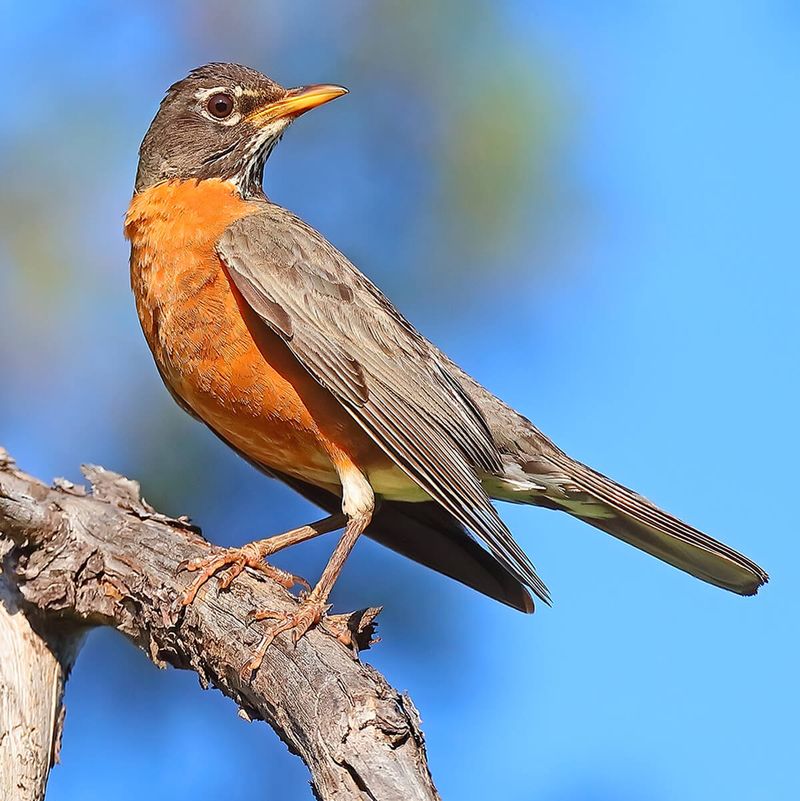
The American Robin is a familiar sight in gardens across America, heralding the arrival of spring with its cheerful song. Sporting a vibrant red breast and a contrasting brown back, it is easy to spot hopping across lawns in search of worms.
Despite its ubiquity, the Robin never fails to bring joy with its melodic tunes. Often nesting in suburban areas, this bird offers an accessible birdwatching opportunity. Observing a Robin building its nest or feeding its chicks can be a delightful experience, connecting us with the rhythms of nature.
Vermilion Flycatcher
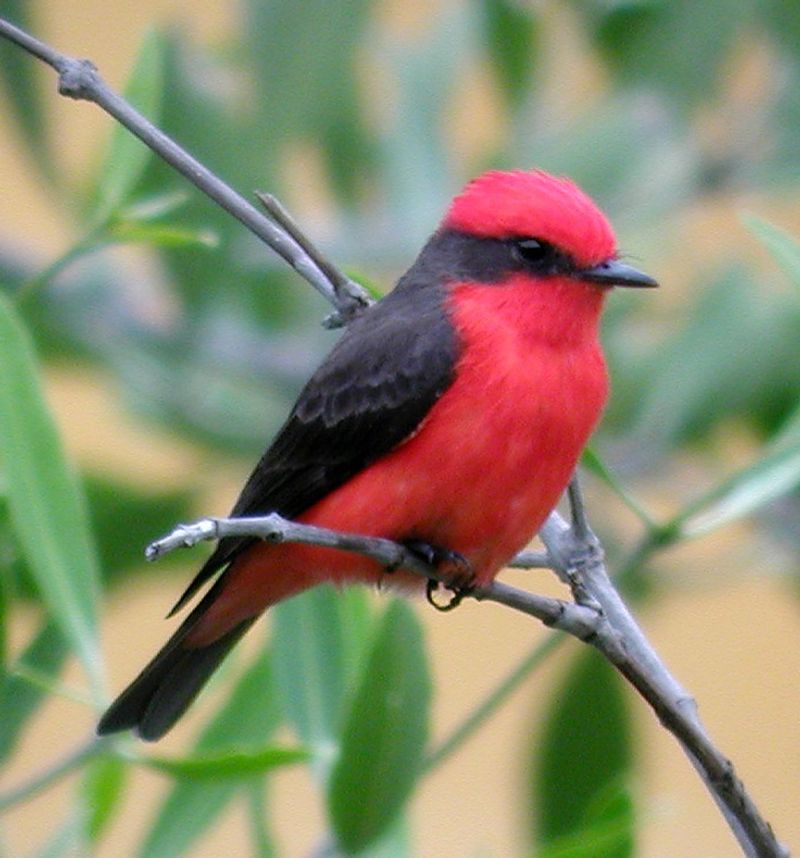
With a flash of bright red, the Vermilion Flycatcher captures attention and admiration. This striking bird is a vibrant splash of color in arid landscapes. Their vivid plumage stands out against the browns and greens of their preferred desert and scrub habitats.
Male Vermilion Flycatchers are known for their dazzling courtship displays, fluttering high in the air before diving dramatically. Their energetic presence is complemented by agile aerial maneuvers as they hunt insects mid-flight.
Though small, these birds leave a big impression, often becoming a favorite among those lucky enough to witness their brilliant display.
Northern Cardinal
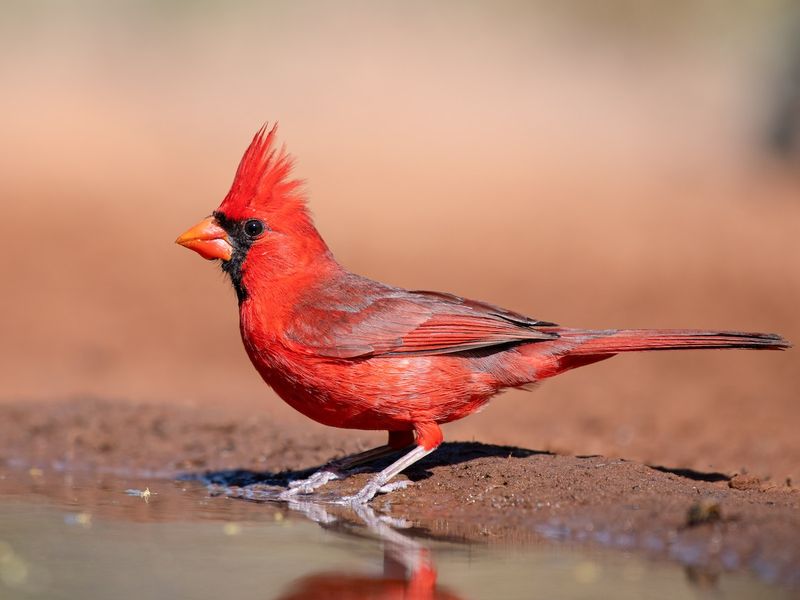
The Northern Cardinal, with its vivid red plumage and distinctive crest, is a favorite among birdwatchers. Males are particularly striking, glowing like jewels against the greenery or snow.
These birds are common visitors at backyard feeders, adding a splash of color to winter landscapes. Their cheerful whistles are a welcome sound, lifting spirits even on the coldest days. The Northern Cardinal’s bold presence and melodious songs make it a must-see for any bird enthusiast, offering a vibrant reminder of nature’s beauty throughout the seasons.
Elegant Trogon
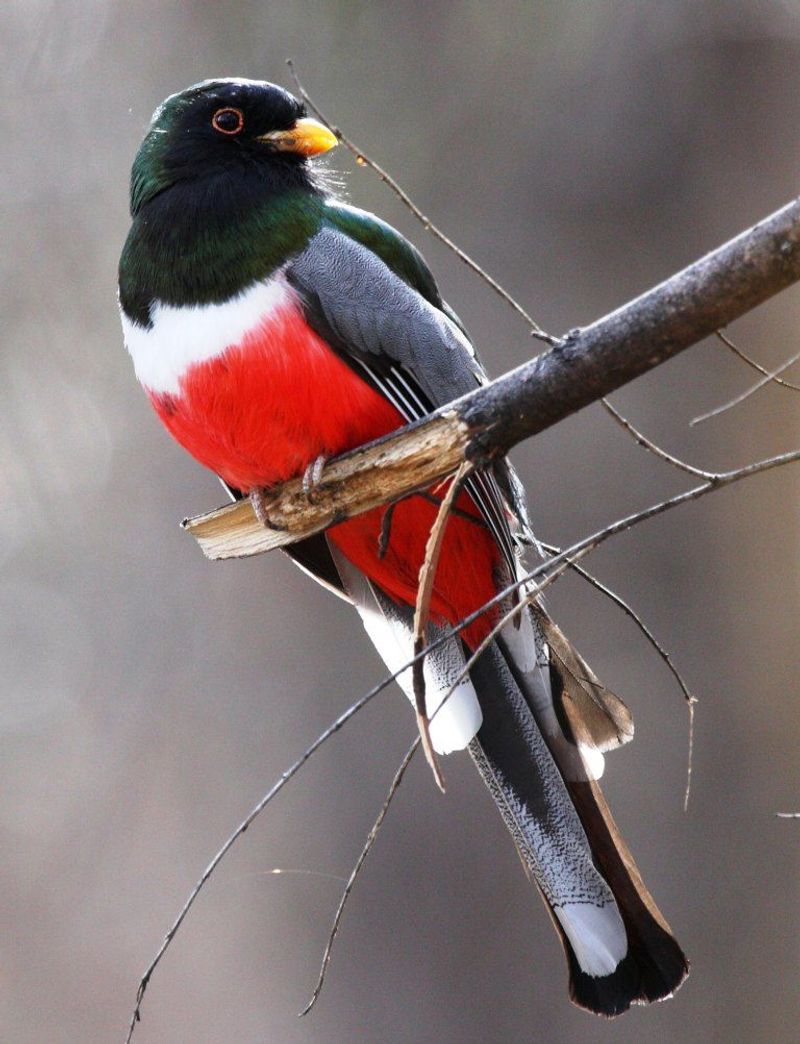
The Elegant Trogon is a rare jewel found in the woodlands of the American Southwest. Its name truly reflects its graceful appearance, with shimmering green upperparts and a bright red belly.
These birds are a marvel to spot, often requiring a keen eye to catch a glimpse as they perch silently in trees. Their soft cooing calls resonate through canyons, a gentle reminder of their presence.
An interesting fact about the Elegant Trogon is its connection to the quetzals, sharing lineage with these famous Central American birds. Spotting one in the U.S. is a true ornithological delight.
Blue Jay
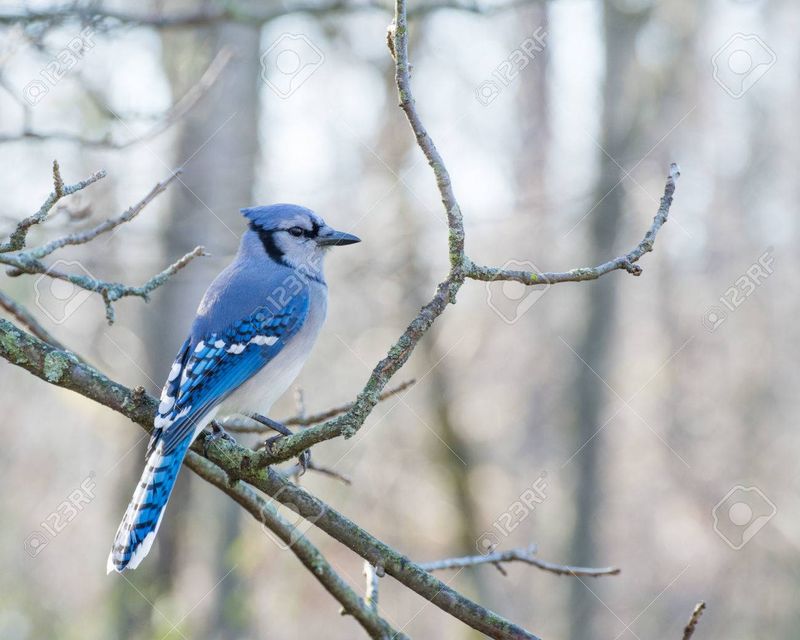
Known for its intelligence and complex social behavior, the Blue Jay is a captivating sight. Its striking blue feathers with white and black accents make it easily recognizable as it flits through wooded areas or suburban yards.
Blue Jays are often heard before they are seen, their loud calls echoing through the trees. They are known for their curiosity and can mimic other birds’ calls, adding intrigue to their presence. Watching a Blue Jay interact with its environment offers insights into the cleverness and adaptability of this remarkable bird.
Yellow Warbler
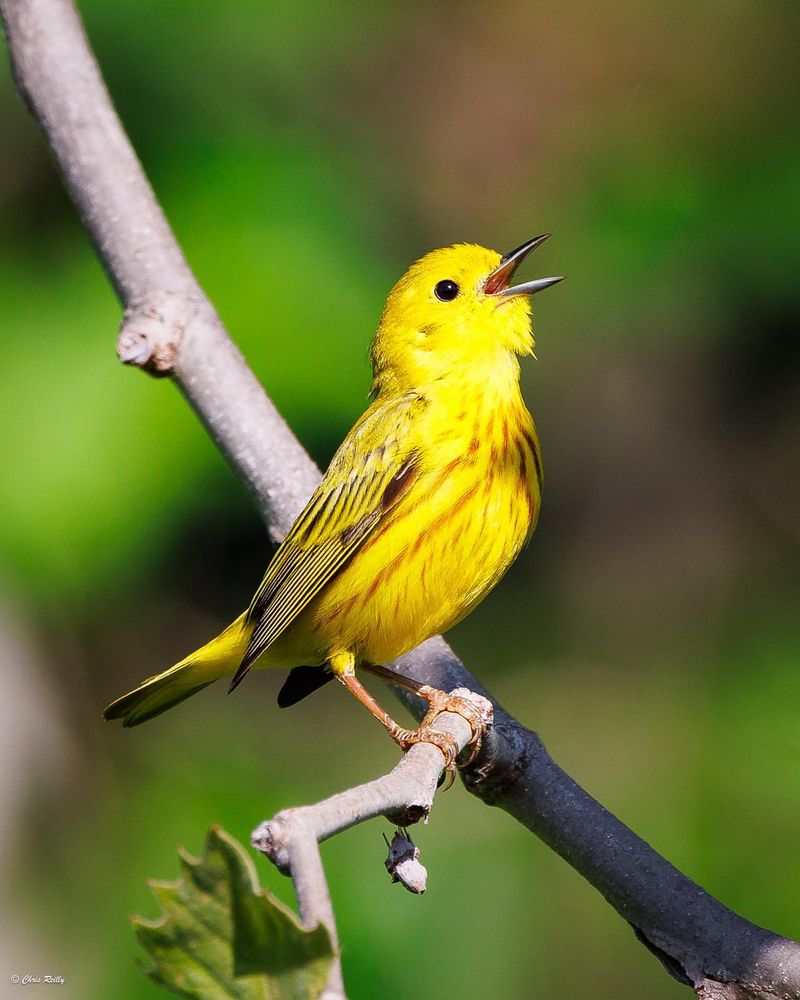
The Yellow Warbler, with its brilliant yellow plumage, is a delightful sight during the spring and summer months. These small, energetic birds are often found flitting among shrubs and trees, searching for insects.
Their cheerful “sweet-sweet-sweet” song is a hallmark of their presence. Observing a Yellow Warbler requires patience and sharp eyes, as they are quick and elusive. Their bright colors and lively behavior make them a favorite among birdwatchers, providing a splash of sunshine on a warm day.
Ruby-throated Hummingbird
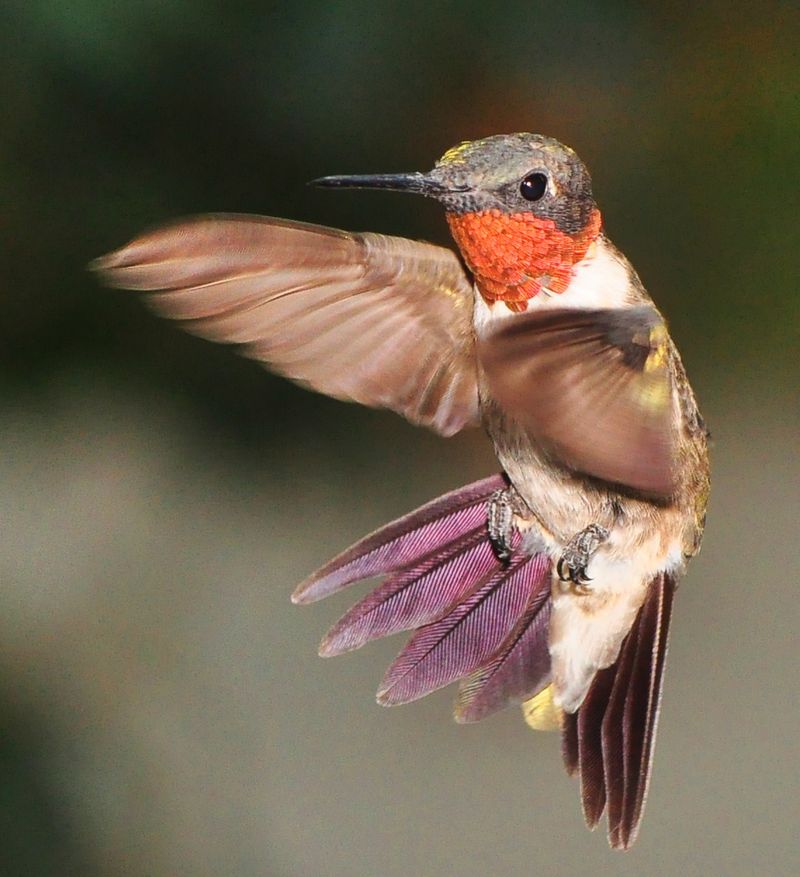
The Ruby-throated Hummingbird, with its dazzling emerald plumage and vibrant ruby throat, is a marvel of nature’s engineering. This tiny bird’s incredible agility and speed make it a fascinating subject for observation.
Often seen flitting from flower to flower, these hummingbirds are attracted to bright blooms and feeders filled with sugary water. Their rapid wing beats produce a humming sound, adding to their charm. Watching a Ruby-throated Hummingbird hover effortlessly is a mesmerizing experience, showcasing the delicate balance and beauty of the natural world.
American Goldfinch
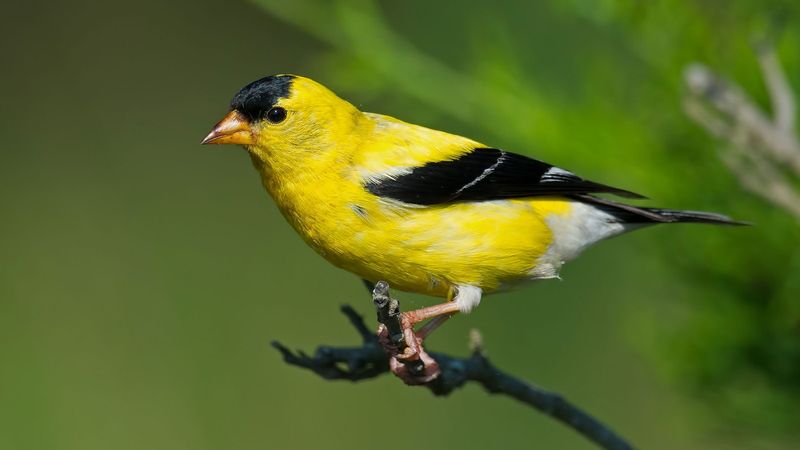
The American Goldfinch, often called the “wild canary,” is a burst of sunshine in bird form. With its bright yellow plumage and black wings, it is a lively presence in gardens and fields.
These social birds often travel in flocks, adding motion and color to the landscape. They are particularly fond of seeds, especially from sunflowers and thistles. Watching a Goldfinch swing from a flower head, extracting seeds, is a charming sight. Their playful antics and cheerful songs make them a joy to observe, especially during the summer months.
Peregrine Falcon
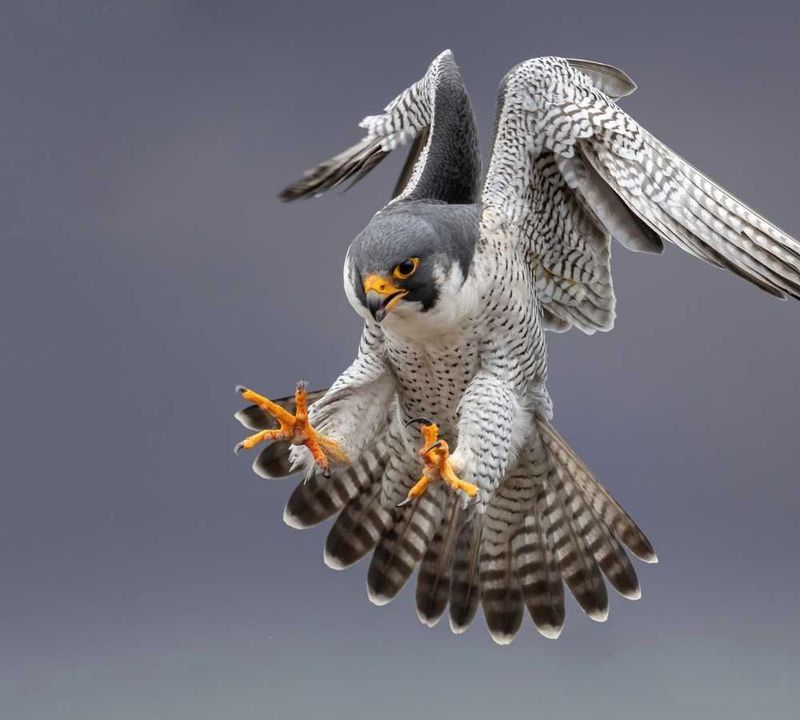
Renowned for being the fastest bird in the world, the Peregrine Falcon is a master of the skies. Its powerful build and keen eyesight allow it to hunt with precision, often seen diving at astonishing speeds to catch prey.
Found in diverse habitats, from urban skyscrapers to coastal cliffs, Peregrine Falcons are adaptable and resilient. Observing one in action, whether perched or hunting, is a testament to nature’s prowess. Their presence in cities, nesting on tall buildings, offers a unique opportunity to witness their remarkable hunting skills up close.
Wood Duck
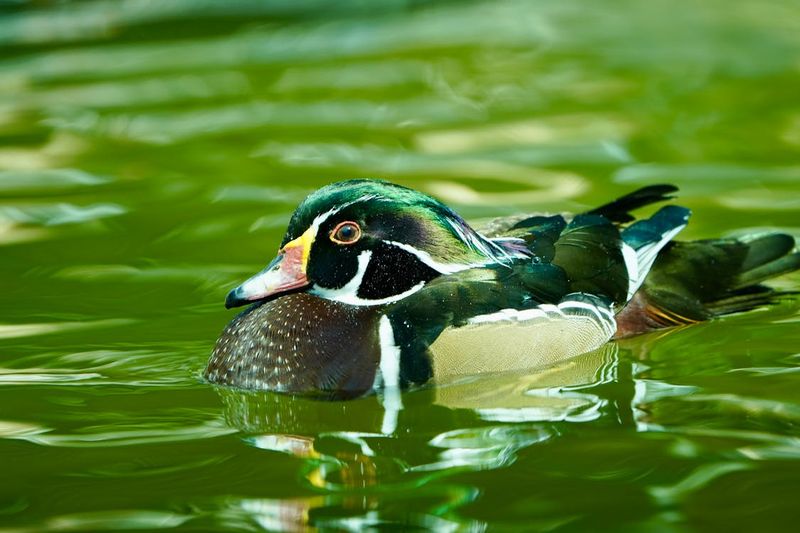
The Wood Duck, with its ornate plumage and striking colors, is a visual delight. Males boast an iridescent green head, red eyes, and intricate patterns on their bodies, making them one of the most beautiful waterfowl.
Found in wooded swamps and ponds, these ducks are excellent swimmers and divers. Observing a Wood Duck in its natural habitat, particularly during the breeding season, reveals its unique courtship displays. Their preference for nesting in tree cavities adds an element of surprise, as they can sometimes be seen perched on branches, a rare sight for ducks.
Great Blue Heron
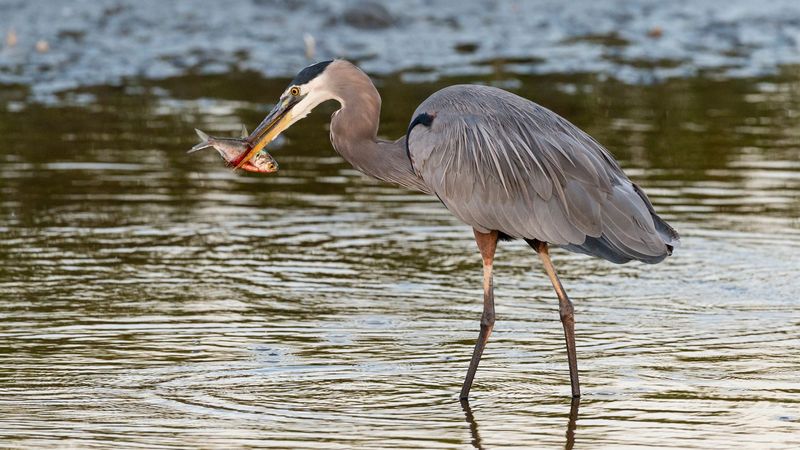
The Great Blue Heron is a symbol of patience and precision. With its tall, lanky frame and striking blue-gray plumage, it is a regal presence in wetlands and along shorelines.
These herons stand motionless for long periods, waiting for the perfect moment to strike at fish or amphibians. Observing their slow, deliberate movements is a lesson in patience and stealth. Their graceful flight, with slow wing beats, adds to their elegance. Spotting a Great Blue Heron in the wild is a rewarding experience, offering a glimpse into the artistry of nature.
Red-winged Blackbird
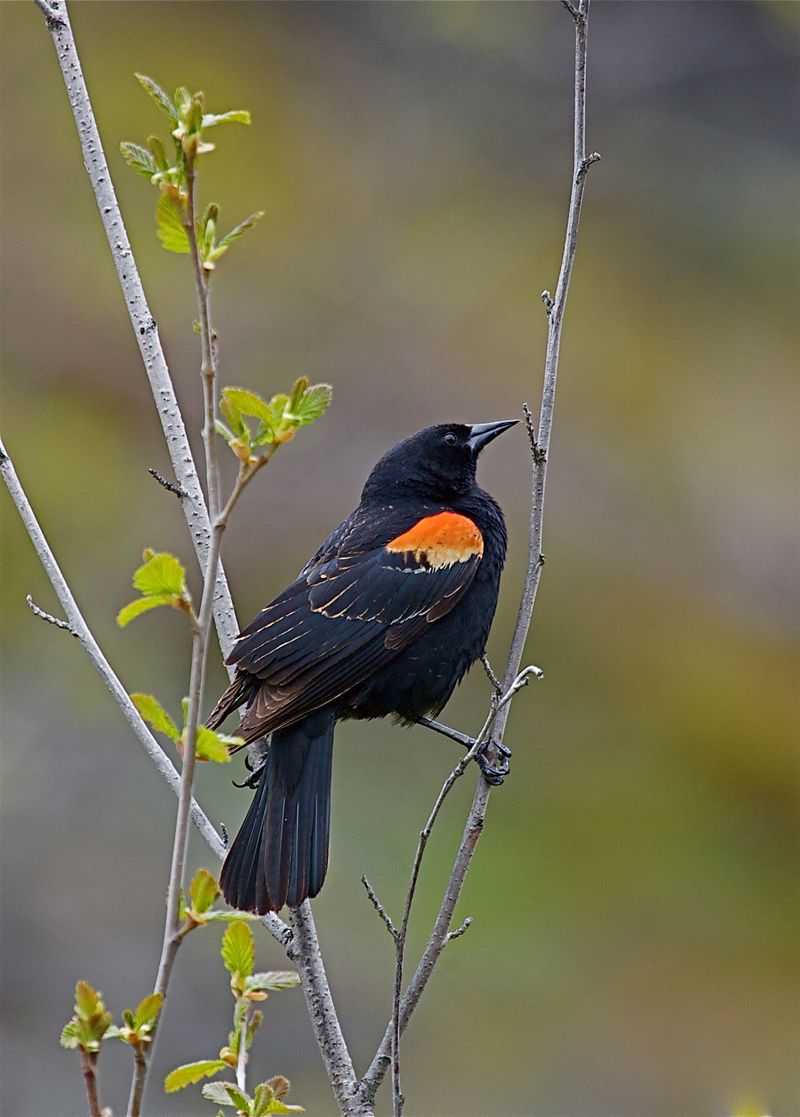
The Red-winged Blackbird is a familiar and striking sight in marshes and wetlands. Males display distinctive red and yellow shoulder patches, contrasting sharply with their black plumage.
Their loud, distinctive calls are a common sound in their habitats. These birds are territorial, often seen defending their nests with fervor. Observing them in their natural environment reveals their social nature and complex behaviors. Their presence signals the health of wetland ecosystems, making them an important species for birdwatchers to appreciate and study.
Eastern Bluebird
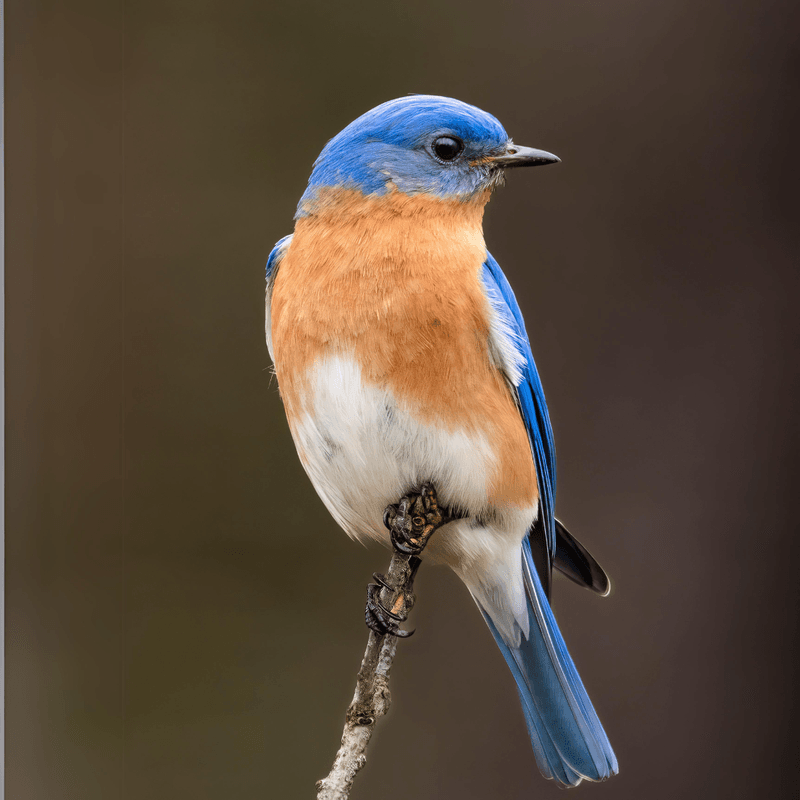
The Eastern Bluebird, with its vivid blue and rusty orange plumage, is a symbol of happiness and renewal. Often found in open fields and orchards, these birds bring a splash of color to rural landscapes.
Their gentle, musical calls add a soothing background to spring mornings. Observing them flit from perch to perch, catching insects, is a delightful sight. Bluebirds often nest in tree cavities or nest boxes, offering birdwatchers a chance to observe their family life. Their cheerful presence serves as a reminder of nature’s simple joys.
Barn Owl
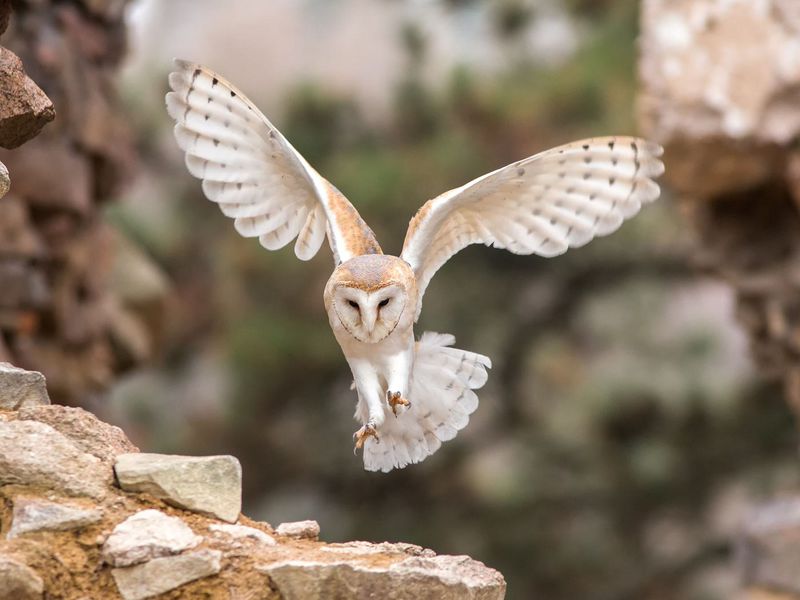
The Barn Owl is an enigmatic presence in the night sky, known for its ghostly appearance and silent flight. Its heart-shaped face and soulful eyes lend it an ethereal beauty that captivates observers.
Often found in barns and open fields, these owls hunt small mammals with precision. Their eerie, raspy calls add to their mystique. Observing a Barn Owl in flight, with its wings barely making a sound, is a spine-tingling experience. Their adaptability to both rural and urban environments makes them a fascinating subject for bird enthusiasts.
Common Loon
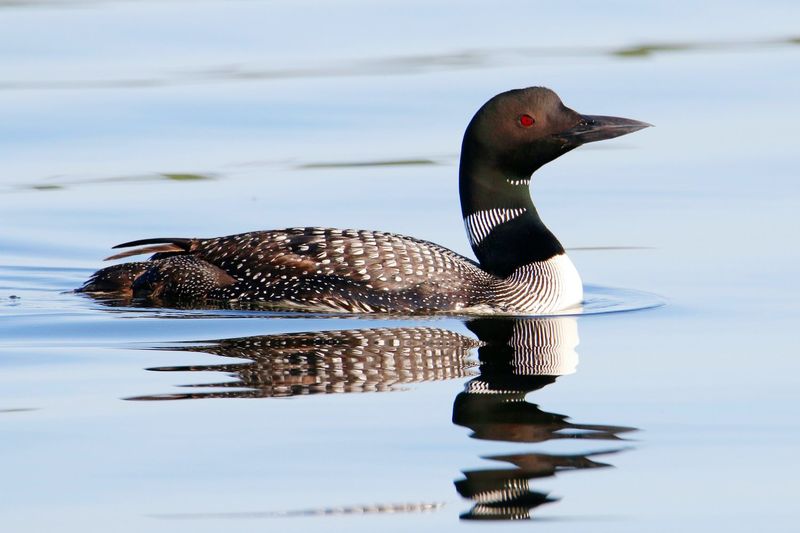
The Common Loon, with its haunting calls and striking plumage, is synonymous with northern lakes. Its black-and-white checkered back and distinctive red eyes make it a unique figure on the water.
Known for their eerie, wailing calls, loons add an element of mystery to tranquil settings. They are expert divers, often disappearing for minutes as they hunt fish underwater. Observing a loon gracefully glide across a lake or witnessing its dramatic takeoff is a memorable experience, connecting onlookers to the serenity and solitude of wilderness.
Scarlet Tanager
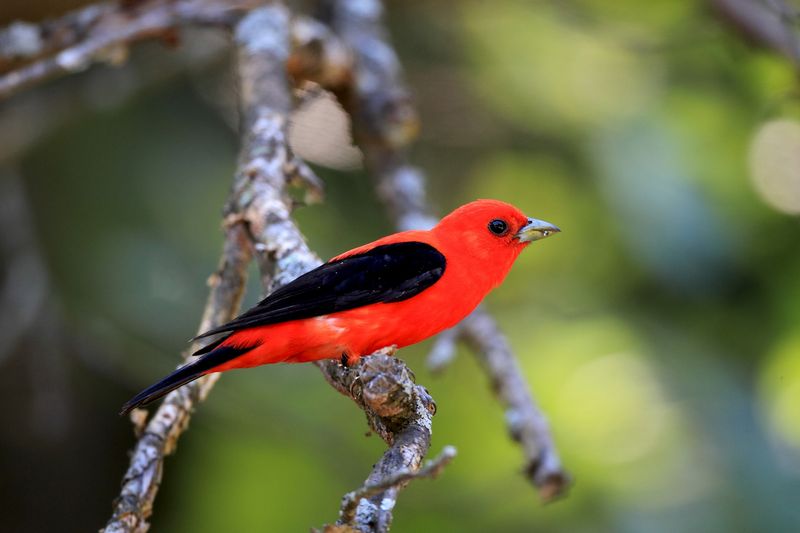
The Scarlet Tanager, with its fiery red plumage and contrasting black wings, is a striking sight in the deciduous forests of America. Males, in particular, stand out during the breeding season, resembling a living flame amid the trees.
These elusive birds are often heard before seen, their rich, burry songs echoing through the forest. Spotting a Scarlet Tanager requires patience and keen eyes, as they blend into the canopy’s shadows. Their presence is a reminder of the vibrant life that thrives in healthy forests, making them a rewarding find for birdwatchers.
Pileated Woodpecker
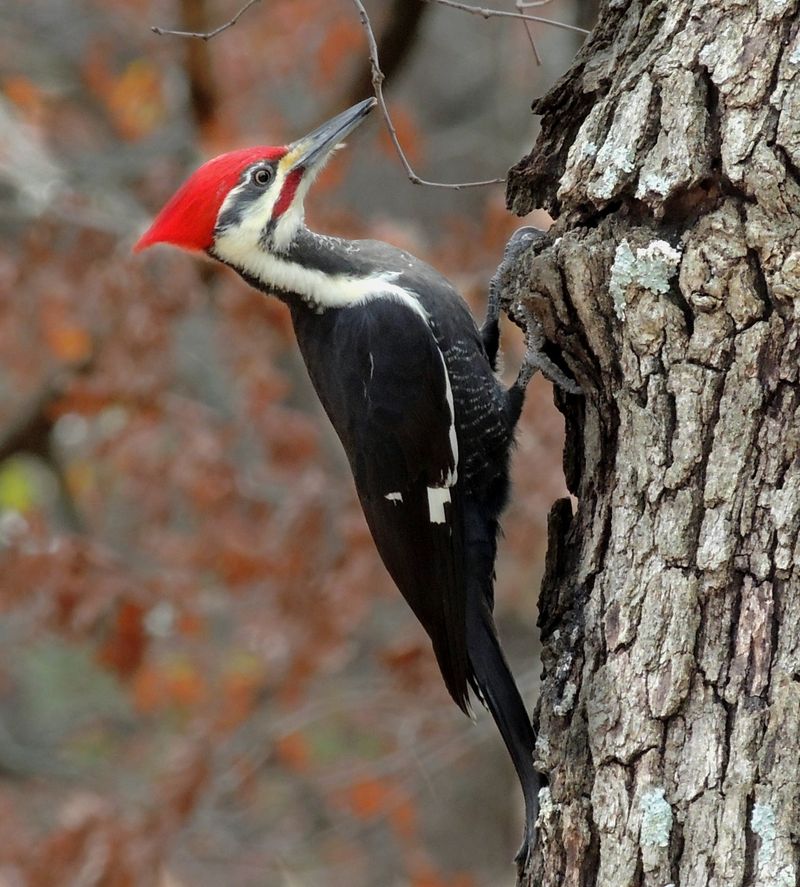
The Pileated Woodpecker, with its striking size and flamboyant red crest, is a commanding presence in mature forests. Its loud drumming and distinctive call make it easily identifiable, echoing through the woods.
These woodpeckers are known for their impressive excavation skills, chiseling large holes in trees to find insects. Observing one at work, with chips of wood flying, is a testament to their strength and determination. Their presence indicates a healthy forest ecosystem, and spotting a Pileated Woodpecker is often a highlight of any birdwatching excursion.
Snowy Owl
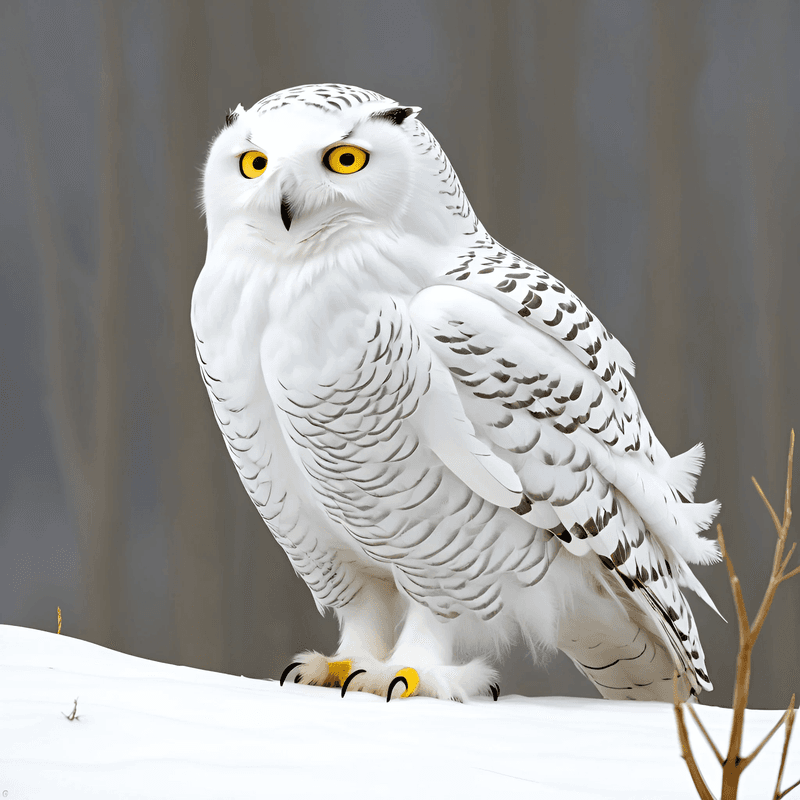
The Snowy Owl, with its regal white plumage and piercing yellow eyes, is a captivating sight in the winter landscape. These owls are well adapted to cold climates, often seen perched on the ground or low posts in open areas.
Their silent flight and keen hunting skills are remarkable, making them effective predators. Snowy Owls are often associated with arctic regions, but during certain winters, they migrate southward, offering a rare treat for birdwatchers. Observing a Snowy Owl in its natural habitat is an enchanting experience, connecting one with the stark beauty of winter.
Roseate Spoonbill
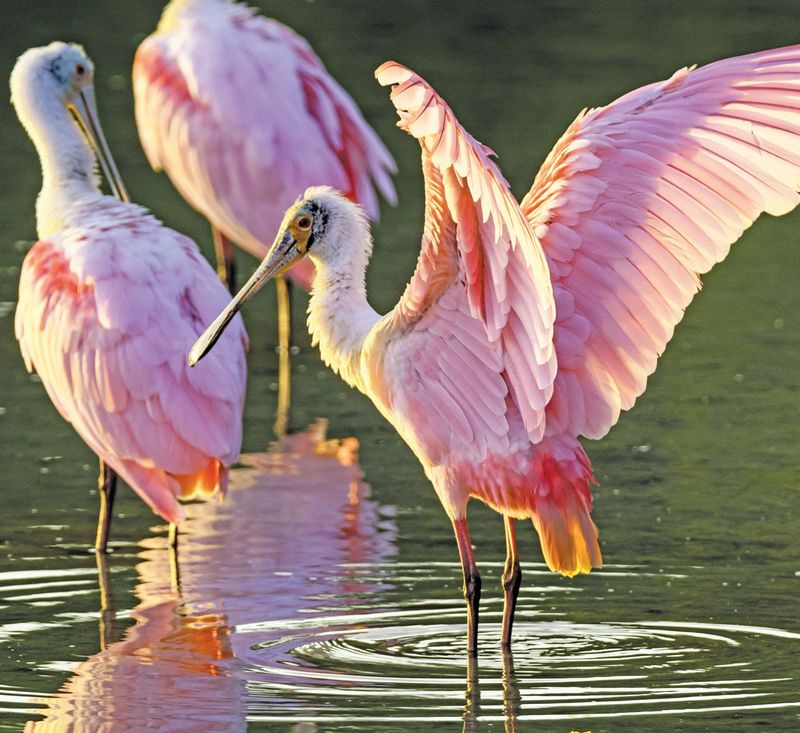
The Roseate Spoonbill, with its flamboyant pink feathers and unique spoon-shaped bill, is a striking sight in wetlands. These birds are often seen wading through shallow waters, sweeping their bills side-to-side in search of food.
Their vibrant coloration and elegant movements make them a favorite among birdwatchers. Observing a flock of Spoonbills in flight, their pink plumage glowing in the sunlight, is a breathtaking spectacle. Their presence in healthy wetland ecosystems highlights the importance of conservation efforts to preserve these vital habitats.
Atlantic Puffin
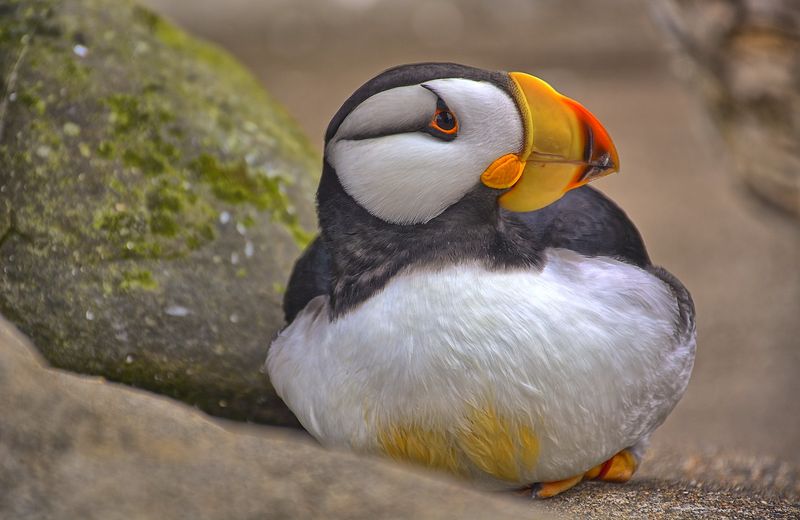
The Atlantic Puffin, often called the “clown of the sea,” is a charming seabird with a distinctive, colorful bill. These birds breed on rocky islands along the Atlantic coast, adding a splash of color to the rugged landscape.
Puffins are expert divers, using their wings to “fly” underwater in pursuit of fish. Observing them during the breeding season, carrying fish back to their burrows, provides insight into their devoted parental care. Their comical appearance and endearing behaviors make puffins a beloved sight for birdwatchers, drawing visitors to coastal nesting sites.
Sandhill Crane
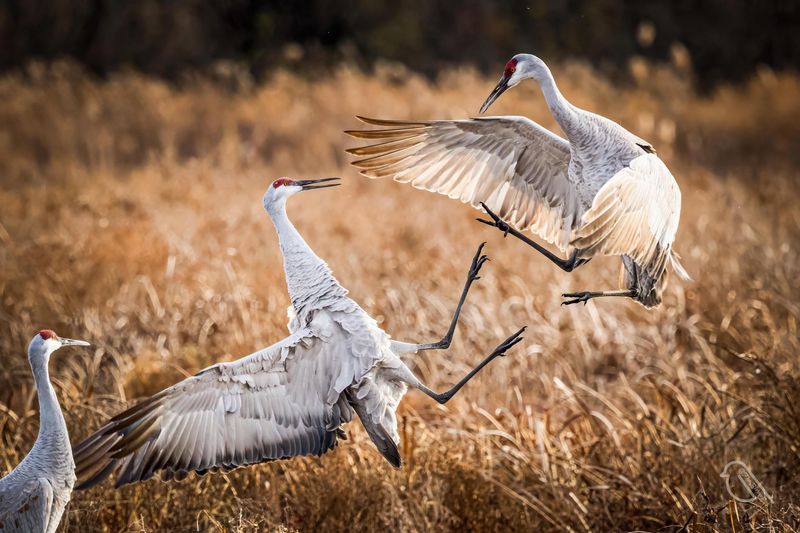
The Sandhill Crane is known for its graceful movements and loud, trumpeting calls. These tall, elegant birds are often seen in fields and wetlands, where they forage for grains and invertebrates.
During the breeding season, their elaborate courtship dances, involving bowing, jumping, and wing flapping, are a spectacular sight. Observing these social birds in their natural habitat offers a glimpse into their complex behaviors and strong family bonds. Their migratory journeys, spanning thousands of miles, are a testament to their resilience and adaptability.
Black-capped Chickadee
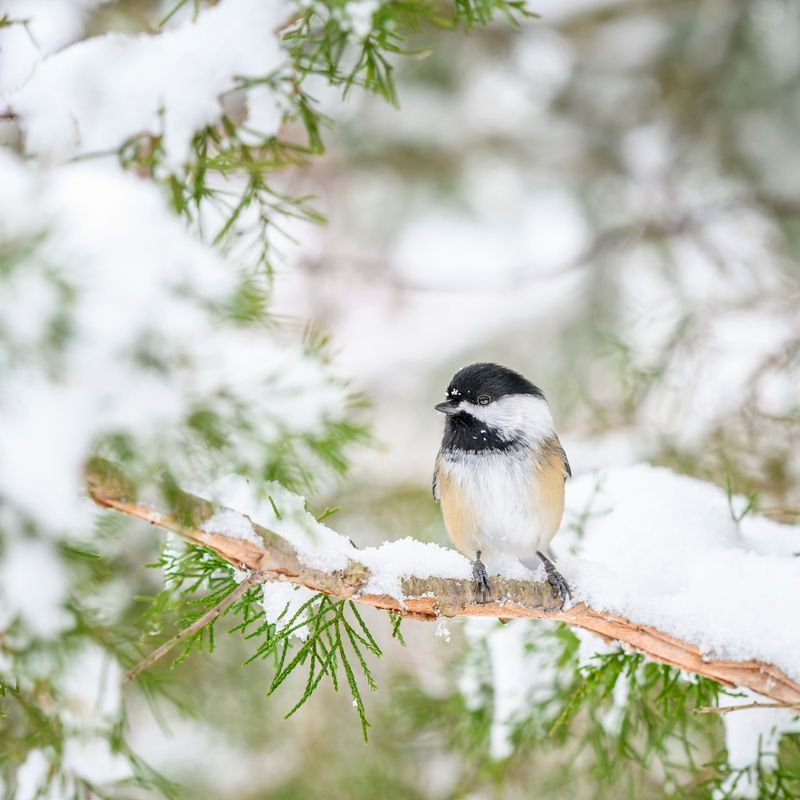
The Black-capped Chickadee, with its distinctive black-and-white head and cheerful disposition, is a beloved visitor to bird feeders across North America. These small, acrobatic birds are known for their curious nature and friendly demeanor.
Chickadees are often seen flitting from branch to branch, searching for insects and seeds. Their distinctive “chick-a-dee-dee-dee” call is a familiar sound in wooded areas and gardens. Observing them in winter, undeterred by cold and snow, offers inspiration and a reminder of nature’s resilience and adaptability.
Northern Flicker
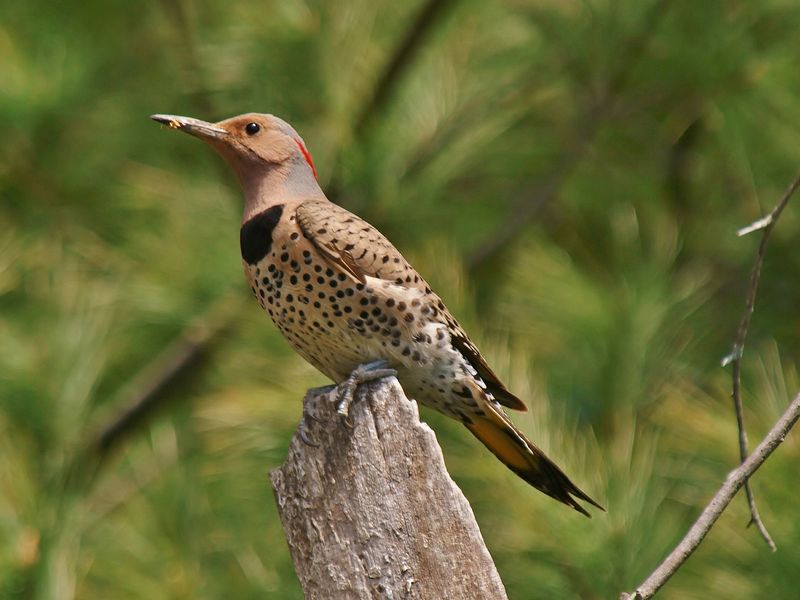
The Northern Flicker is a unique woodpecker, known for its spotted plumage and distinctive calls. Unlike other woodpeckers, it often feeds on the ground, searching for ants and beetles in open areas.
These birds are easily identified by their loud, rhythmic drumming and bright, flashing wing patterns during flight. Observing a Northern Flicker at work is a fascinating glimpse into its foraging techniques and adaptability. Their presence in diverse habitats, from forests to city parks, highlights their versatility and importance in controlling insect populations.
Western Tanager
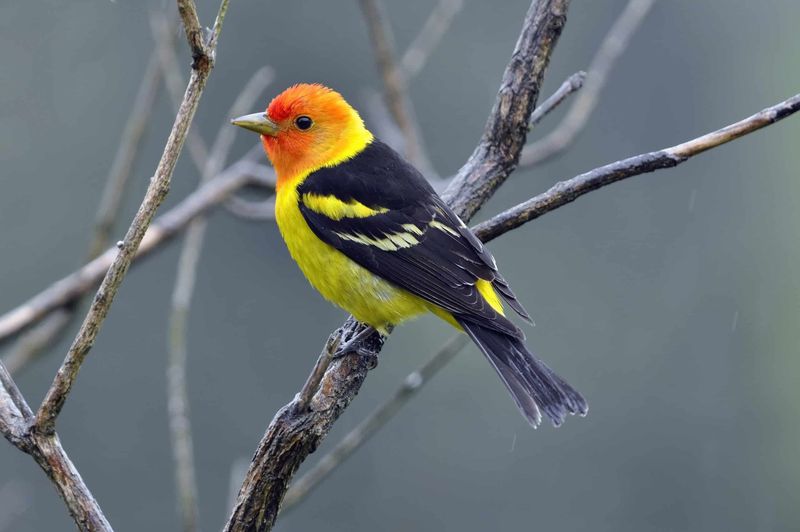
The Western Tanager is a burst of tropical color in North America’s forests. Males are particularly striking, with vivid yellow bodies and fiery red heads, a combination rarely seen outside tropical regions.
These birds migrate long distances, wintering in Central America. Observing a Western Tanager in its forest habitat, catching insects mid-air, is a thrilling sight. Their presence is a reminder of the interconnectedness of ecosystems across continents. Birdwatchers treasure sightings of these brightly colored migrants, often fleeting but always memorable.
Cedar Waxwing
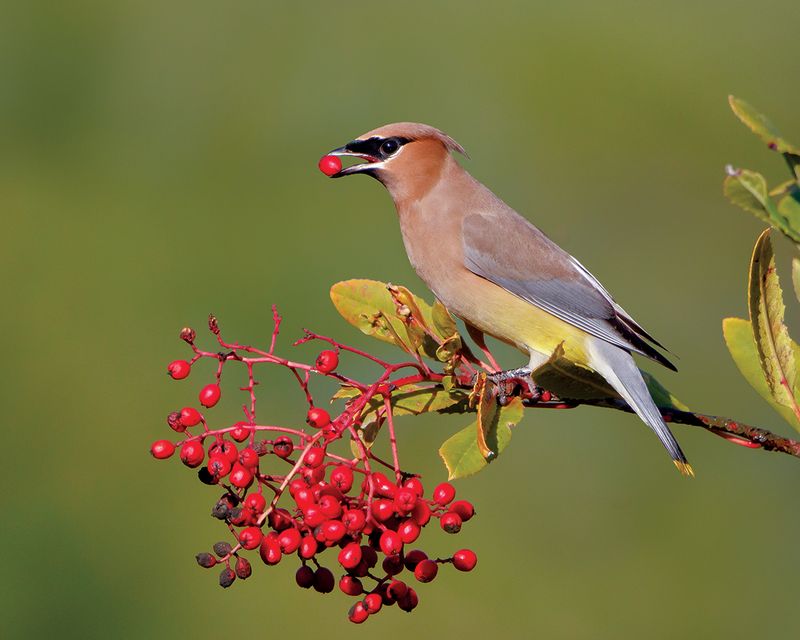
The Cedar Waxwing is known for its silky plumage and striking black mask. These social birds are often seen in flocks, feeding on berries in orchards and woodlands.
Their high-pitched calls and graceful flight patterns make them a joy to watch. Observing a flock of Waxwings descending on a fruit-laden tree is a delightful spectacle, showcasing their cooperative nature. Their fondness for berries also aids in seed dispersal, highlighting their ecological importance. Cedar Waxwings bring elegance and charm to birdwatching experiences.
American Kestrel
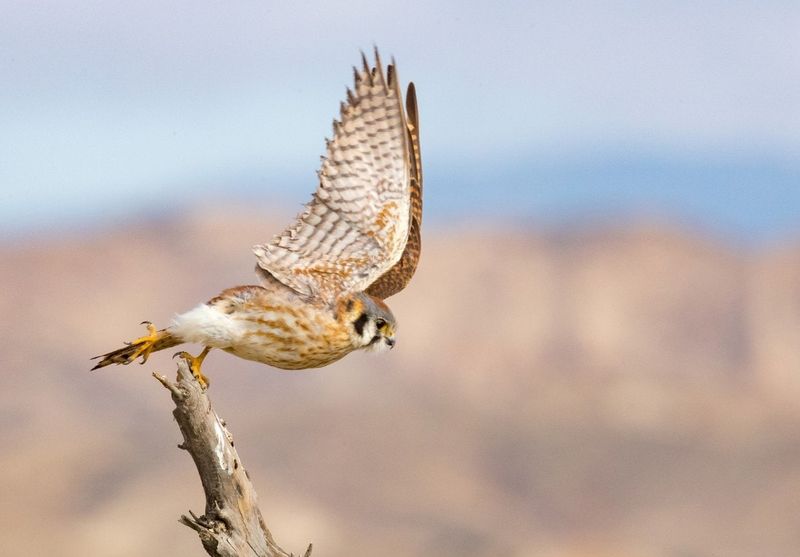
The American Kestrel is a small but fierce predator, often seen perched on wires and fence posts. With its striking rufous and slate-blue plumage, it cuts a bold figure against open landscapes.
These falcons are known for their hunting prowess, hovering in mid-air before diving to catch insects and small mammals. Observing a Kestrel in action, with its keen eyes and agile flight, is a testament to its adaptability. Their presence in both rural and urban areas makes them accessible to birdwatchers, offering a glimpse into the life of a skilled hunter.
White-breasted Nuthatch
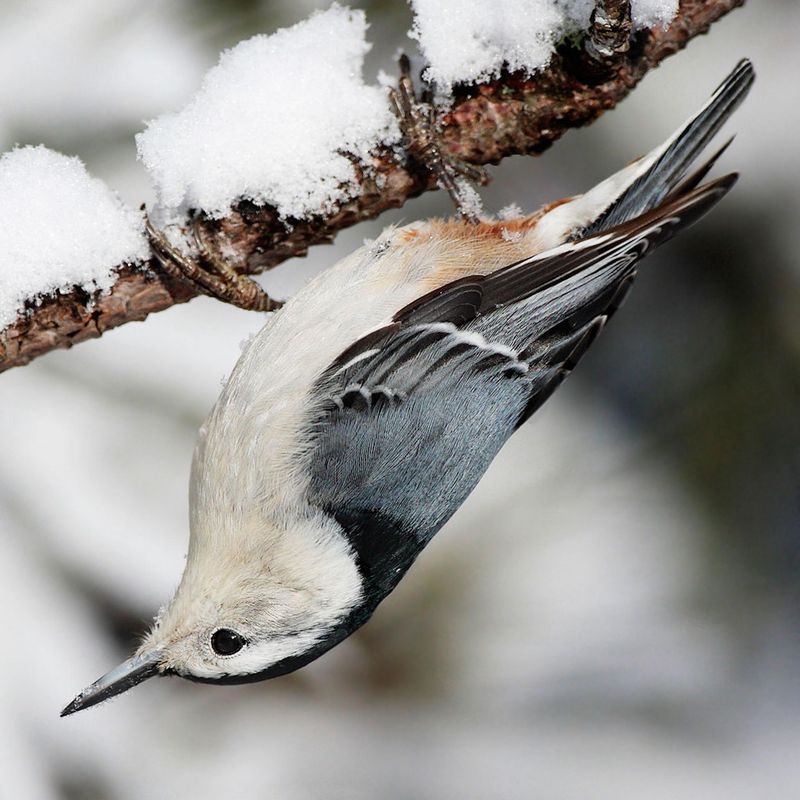
The White-breasted Nuthatch is known for its acrobatic foraging style, often seen moving headfirst down tree trunks. Its distinctive black cap and bright white face make it easily recognizable.
These birds are frequent visitors to feeders, where they hoard seeds for winter. Their nasal calls and lively antics add character to wooded areas. Observing a Nuthatch in action offers insights into its resourcefulness and adaptability. Their behavior of caching food ensures survival during harsh conditions, making them a fascinating subject for birdwatchers to study and admire.

